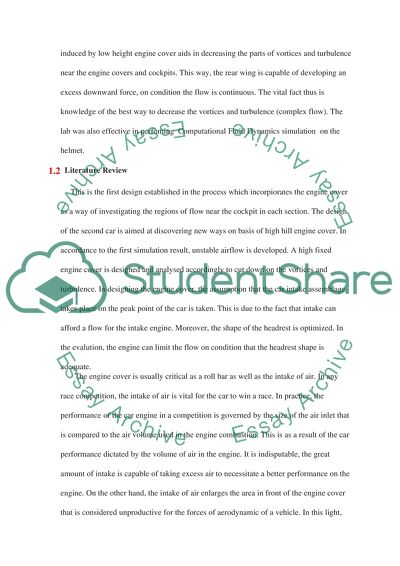Cite this document
(“Design and analysis (aerodynamics) of the new engine cover for open Lab Report”, n.d.)
Design and analysis (aerodynamics) of the new engine cover for open Lab Report. Retrieved from https://studentshare.org/engineering-and-construction/1641872-design-and-analysis-aerodynamics-of-the-new-engine-cover-for-open-wheel-climb-race-car-in-by-using-cfd-computational-fluid-dynamics-2500-words
Design and analysis (aerodynamics) of the new engine cover for open Lab Report. Retrieved from https://studentshare.org/engineering-and-construction/1641872-design-and-analysis-aerodynamics-of-the-new-engine-cover-for-open-wheel-climb-race-car-in-by-using-cfd-computational-fluid-dynamics-2500-words
(Design and Analysis (aerodynamics) of the New Engine Cover for Open Lab Report)
Design and Analysis (aerodynamics) of the New Engine Cover for Open Lab Report. https://studentshare.org/engineering-and-construction/1641872-design-and-analysis-aerodynamics-of-the-new-engine-cover-for-open-wheel-climb-race-car-in-by-using-cfd-computational-fluid-dynamics-2500-words.
Design and Analysis (aerodynamics) of the New Engine Cover for Open Lab Report. https://studentshare.org/engineering-and-construction/1641872-design-and-analysis-aerodynamics-of-the-new-engine-cover-for-open-wheel-climb-race-car-in-by-using-cfd-computational-fluid-dynamics-2500-words.
“Design and Analysis (aerodynamics) of the New Engine Cover for Open Lab Report”, n.d. https://studentshare.org/engineering-and-construction/1641872-design-and-analysis-aerodynamics-of-the-new-engine-cover-for-open-wheel-climb-race-car-in-by-using-cfd-computational-fluid-dynamics-2500-words.


